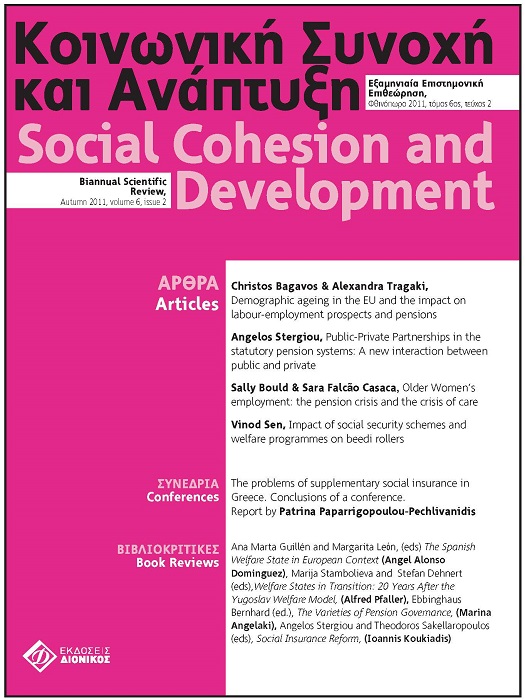Demographic ageing in the EU and the impact on labour-employment prospects and pensions
Abstract
The paper examines the potential volume of
employed population, seen from the supply
point of view, in selected European countries,
in the context of the expected demographic
ageing. Our findings indicate that disparities
across EU are rather pronounced. Future
potential employment varies across countries,
because of diverse working-age population
trends and various employment rates by age
and sex. In a declining working-age population
context, an increase in the employment rates
could prevent or at least moderate labour
force shrinkage. As for pensions, the paper
underlines the importance of the employment
potential of the non-employed in order to
compensate for demographic ageing and
therefore for the expected increase in the
number of pensioners.
Article Details
- Zitationsvorschlag
-
Μπάγκαβος Χ., & Τραγάκη Α. (2016). Demographic ageing in the EU and the impact on labour-employment prospects and pensions. Social Cohesion and Development, 6(2), 89–101. https://doi.org/10.12681/scad.8961
- Ausgabe
- Bd. 6 Nr. 2 (2011)
- Rubrik
- Articles

Dieses Werk steht unter der Lizenz Creative Commons Namensnennung - Nicht-kommerziell - Weitergabe unter gleichen Bedingungen 4.0 International.
Authors who publish with this journal agree to the following terms:
- Authors retain copyright and grant the journal right of first publication with the work simultaneously licensed under a Creative Commons Attribution Non-Commercial License that allows others to share the work with an acknowledgement of the work's authorship and initial publication in this journal.
- Authors are able to enter into separate, additional contractual arrangements for the non-exclusive distribution of the journal's published version of the work (e.g. post it to an institutional repository or publish it in a book), with an acknowledgement of its initial publication in this journal.
- Authors are permitted and encouraged to post their work online (preferably in institutional repositories or on their website) prior to and during the submission process, as it can lead to productive exchanges, as well as earlier and greater citation of published work (See The Effect of Open Access).



